When you write an academic paper, you normally use the thoughts of others and build upon many reliable sources to include proof of these thoughts. But if you do not quote your sources properly, it becomes a crime of "plagiarism." Plagiarism can bring severe consequences, from damaged reputations to academic penalties. One of the biggest challenges faced by many students is how to effectively identify where plagiarism has occurred. This guide offers 6 practical methods, including both manual checking and AI-powered plagiarism detectors, which will help you avoid this serious academic issue.
What is Plagiarism
Plagiarism means to use another person's work or ideas without giving proper credit to the author. It can come in many forms; some examples include:
- Copying something from one source without putting quote marks around it
- Paraphrasing the thought of someone else without noting where these ideas come from
- Submitting an assignment done by another person as if it were your work
Long-running surveys from the International Center for Academic Integrity show over 60% of university students admit to some form of cheating. It shows how common academic integrity risks actually are.
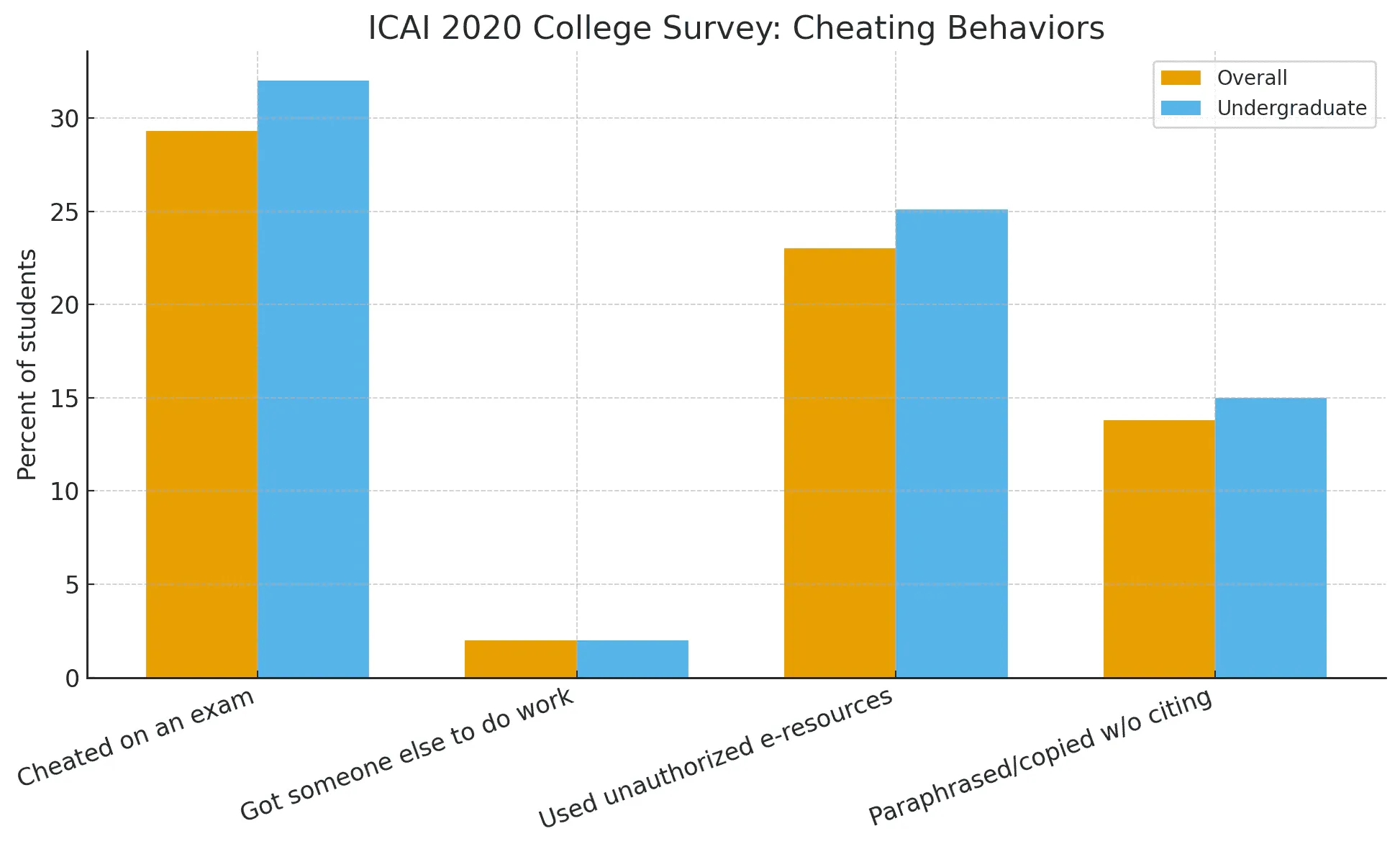
That's why understanding what forms of plagiarism are helps both students and educators keep up with academic rules.
What Is The Best Way To Check For Plagiarism
When it comes to checking for plagiarism, there are two main approaches: manual verification and AI plagiarism detection tools. It is widely believed that free plagiarism checkers often fail to detect copied content or mistakenly flag original text as plagiarism. On the flip side, manual checking is highly accurate but extremely time-consuming.
Tired of worrying about accidental plagiarism in your writing? JustDone offers an all-in-one solution that goes beyond basic plagiarism check. Its advanced AI not only identifies potential plagiarism with remarkable accuracy but also helps you properly paraphrase and cite sources. With JustDone's Chrome extension, you can seamlessly check content as you write, saving precious time.
Let’s explore the different plagiarism detection methods, comparing their time efficiency and accuracy to determine the best approach.
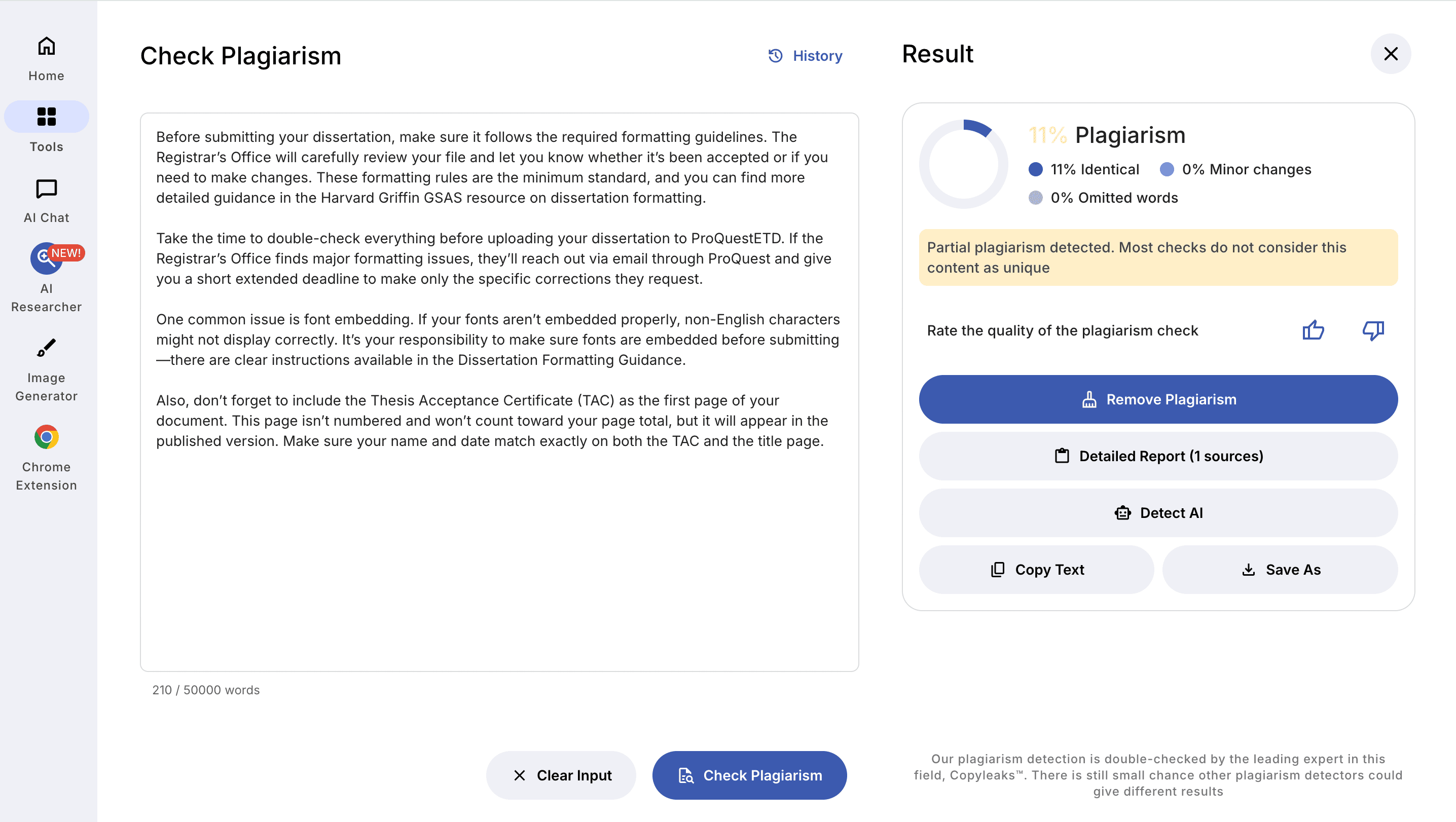
How to Manually Check Plagiarism
While AI checkers make plagiarism detection much easier, it is still worthwhile to know how to check for plagiarism manually. On the one hand, manual checking is a time-consuming task and requires extensive knowledge of all sources that you use in your work. However, it ensures you don’t use borrowed citations without proper referencing. Here are some steps that you can take to check plagiarism step-by-step in the most accurate way:
- Review Your Sources: You must be familiar with the sources you cite. Compare your writing to them for phrases or thoughts that are the same.
- Paraphrase Properly: Paraphrase carefully and show clearly that you know borrowed material. Use indirect quotes according to your referencing style in case you need to cite other authors but do not have direct citation. It will also help avoid plagiarism in your work.
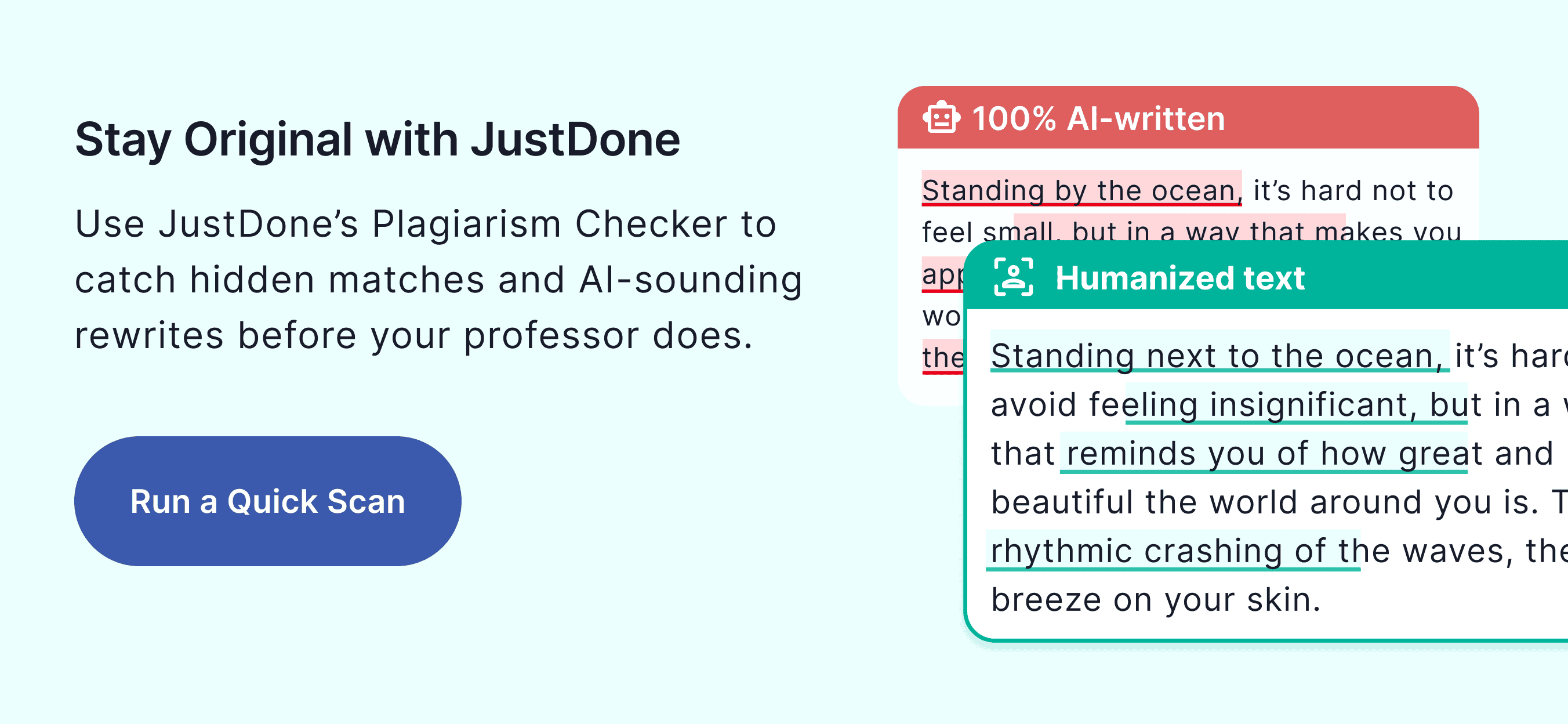
As a result, manual checking can detect paraphrased plagiarism that AI tools may miss. Also, it helps verify proper citations and quote attribution. However, this method has its cons, because it’s time-consuming, especially for long documents. Beside, it's nice to mention that it’s absolutely not scalable for multiple papers or large research projects.
How to Avoid Plagiarism with AI
AI plagiarism checkers have become must-have safeguards for keeping your original work from being stolen. While manual checking may be tough and time-consuming, you can try AI-powered tools that use advanced database software to scan for matches between your text and existing ones. Let's explore the steps you need to follow to check plagiarism with AI in the most accurate way.
First, pick a trusted AI detector. A good AI checker can identify duplicate content and generate a detailed report. Well-known choices include JustDone, Turnitin, or Grammarly.
Then, integrate an AI plagiarism detector with your writing workflow. I recommend using JustDone's AI tools to filter your papers for possible plagiarism before submitting.
Finally, make sure you understand the reports from your tool. Pay special attention to the figure denoting the percentage of similarity. Paraphrase text or use quotation marks to avoid plagiarism and enhance your score.
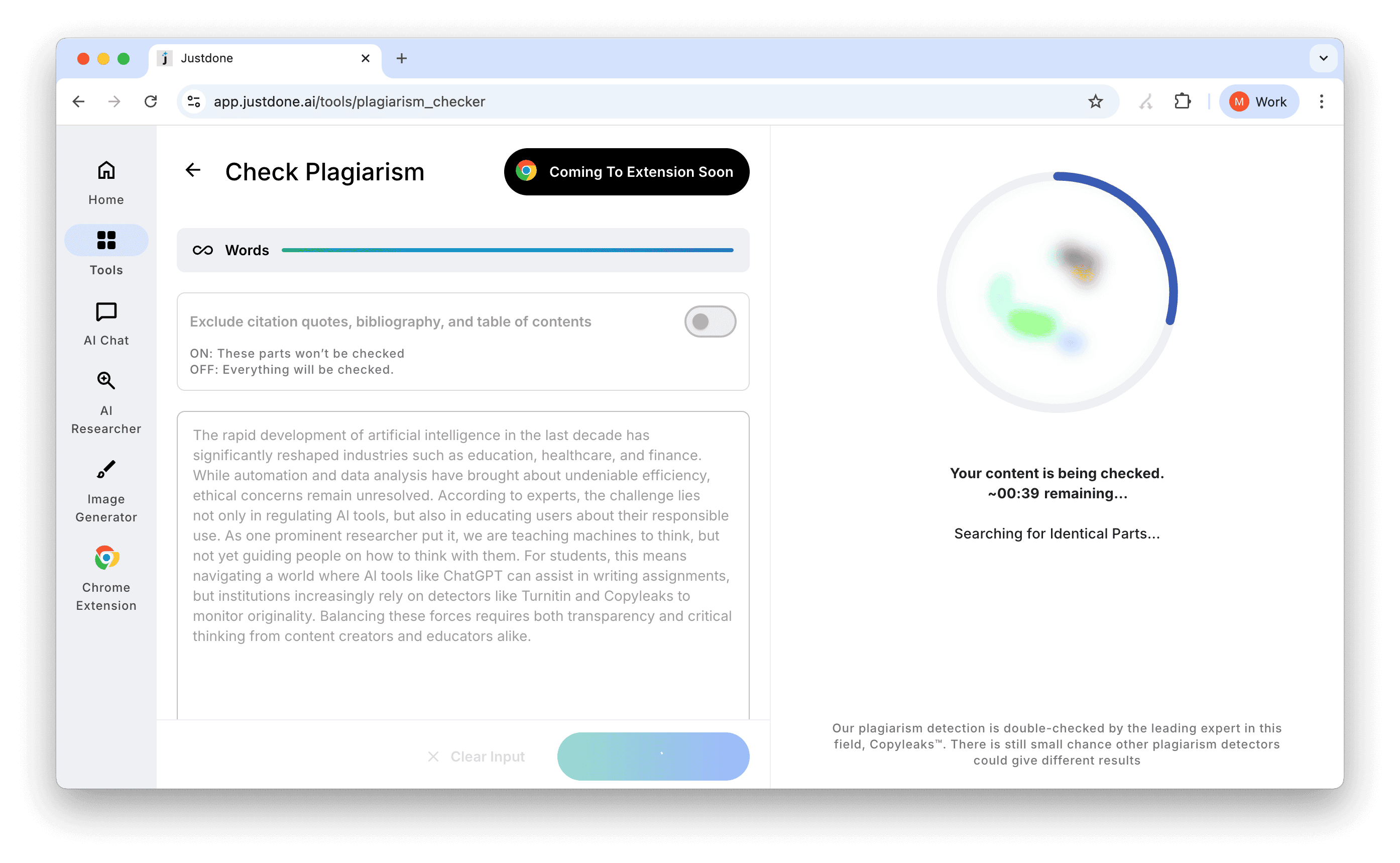
Why Use AI Plagiarism Checkers
Manual checks are necessary to understand context, but AI plagiarism detectors work more efficiently. Their benefits also include:
- Speed and Efficiency: AI can scan millions of references in seconds.
- More Accuracy: AI checkers compare text against a vast database of academic papers, websites, and books to detect even subtle similarities.
- Paraphrase Detection: Many AI tools can detect generated content and sloppy paraphrasing which manual checks usually miss.
- In-Depth Results: AI-generated reports highlight exact matches and provide percentage scores, making it easy to assess originality.
- Time-saving Solution for Students: With AI plagiarism detection, you don’t need to spend hours reviewing text manually, AI-powered tools will give you instant results.
AI plagiarism detectors have many benefits, however, they may misinterpret properly cited content as plagiarism. Besides, free versions often have limited databases and features.
Important context: Studies show that plagiarism checkers can be less reliable for non-native English writing and are easily influenced by paraphrasing style. So, I recommend students always combine detectors with manual review.
6 Best Practices to Avoid Plagiarism
First, it always starts with understanding what you’re writing about. This sounds basic, but it’s the step most people rush through. Too often, students grab a paragraph from a source, swap out a few words using a thesaurus or a paraphrasing tool, and think they’re done. But if you don’t actually grasp the meaning of the material, you’re likely to stumble into accidental plagiarism. My rule is simple: if I can’t explain the idea to a friend out loud, then I’m not ready to write it down in my own words. Sometimes I have to reread a source article two or three times before it clicks. That extra effort always pays off, because once you really understand the concept, rephrasing it naturally becomes easier—and safer.
Another key part of my process is using AI tools wisely, especially the JustDone Plagiarism Checker. I never wait until the final draft to check for originality. I scan sections of my work early and often, especially after I integrate research into my writing. This helps me catch similarities or over-reliance on source material before I get too far along. It’s less stressful than finding out at the last minute that you accidentally echoed a source too closely.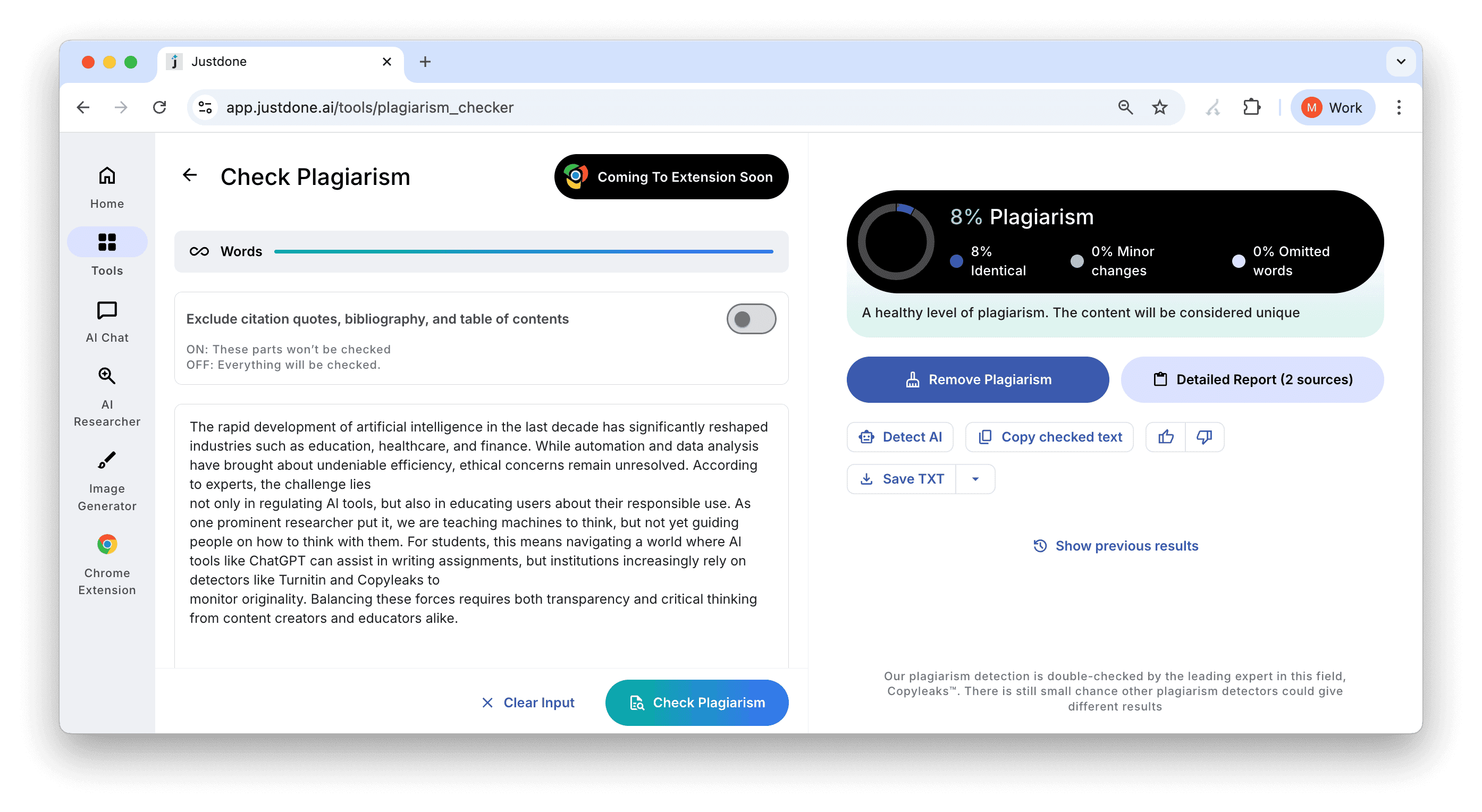
I also recommend starting a citation list as soon as you begin researching. This might sound tedious, but it saves so much time later. I keep a running document where I copy links, book titles, page numbers, and any relevant citation details while I’m gathering information. This prevents the last-minute scramble where you’re trying to remember where a specific quote came from or searching for a source you forgot to bookmark. Building this habit early makes writing your bibliography much easier and reduces the risk of missing attributions.
One mistake I see students make all the time is relying on just one article or website when writing about a topic. This often leads to accidental paraphrase plagiarism because your work ends up mirroring a single source too closely. A better strategy is to read at least two or three perspectives, then synthesize the information. When you pull ideas from multiple places, your writing naturally becomes more original because you’re blending different viewpoints and not just rewriting one text.
When it comes to quoting, less is usually more. It’s tempting to drop in large chunks of direct quotes to fill space or sound more academic, but that can backfire. The work should represent your own ideas and interpretations, with quotes used only when absolutely necessary, like when the original author’s wording is so precise or significant that it needs to be preserved. Otherwise, paraphrase carefully and cite correctly.
In my experience, the best way to avoid plagiarism is to combine both AI tools and manual review. I always start with a scan from the JustDone AI plagiarism checker because it quickly highlights any sections that might be too close to existing sources. This saves me hours of second-guessing. But I don’t stop there. I go back and look at the flagged sections myself to decide if they’re properly cited or if they need rewriting. Sometimes, a checker will flag something that’s fine because it’s a common phrase or a correctly cited quote. That’s where human judgment comes in.
Final Thoughts on How to Check Plagiarism
The combination of AI detection and manual revision has worked best for me and for the students I mentor. It lets you work faster without sacrificing accuracy. You get the speed and convenience of AI to catch problems early, plus the confidence that comes from doing your own careful review. Whether you’re a student writing essays, a researcher preparing a paper, or an educator guiding others through the process, this blended approach is the smartest way to protect your work from plagiarism and keep your writing both original and authentic.
F.A.Q.
Does ChatGPT plagiarize?
No, ChatGPT does not plagiarize. It generates responses based on patterns in publicly available and licensed data, but does not copy text verbatim from sources.
How much plagiarism is allowed?
Most universities accept an asimilarity score of under 15% as reasonable, but it depends on the institution’s guidelines. If your score is higher, review your work to ensure proper citations and paraphrasing.
How can I check plagiarism for free?
You can detect plagiarism manually; it’s completely free, but time-consuming. Another way is to use AI detectors like JustDone, Grammarly, Quillbot, etc. Most of them have free trial periods or basic free checks.
What is the best way to check plagiarism?
The best way to avoid plagiarism is to start with AI detectors and finish with manual review of proper citations and checking for false positive results.